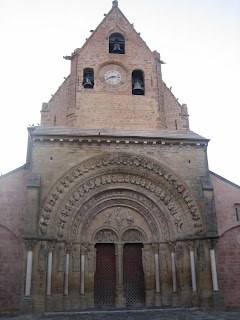
I was soon walking through the popular recreational area of the Fôret Dominiale de Bastard (Bastard State Forest!) After miles of long, straight forestry tracks I reached the race-course at Lartigue, a northern suburb of Pau. Although Pau is slightly off-trail (the waymarked pilgrim route stays on the northern edge of Pau and heads directly for the ancient settlement of Lescar) I'd decided earlier that I wanted to explore this city - so I took a bus for 3.5 km into the centre.
Pau (population 80,000) is the capital of the Pyrénées-Atlantiques department in the region of Aquitaine, and capital of the former province of Béarn. The British have long been associated with Pau - ever since Wellington left a garrison there on his way to Spain during the Napoleonic Wars - and they have the dubious distinction of establishing the first ever European golf course there. Famously, Pau is the birthplace of French king Henry IV (1553-1610) - and his spirit lives on in the town in the form of tourist bric-à-brac, civic sculptures and, magnificently, the imposing château:

As well as a guided tour of the castle - I remember the tapestries were particularly fine - I stocked up on even more culture by looking round the Musée des Beaux-Arts, which contained paintings by Rubens, Vuillard, El Greco - and this beautiful representation of the female form:

2 comments:
That was interesting. I had no idea where Pau was, but I looked at that church and thought 'That looks like a wonderful Norman arch'.
Presumably, I'm right, since the Normans did come from France, did they not?
Yep, over here we say 'Norman' about pre-Gothic architecture (rounded arches etc)when referring to Britain and 'Romanesque' when referring to France. Lots of Romanesque churches in France and Spain. And I saw quite a few on the Camino walk I'm writing about. Confusingly, in France they don't say 'Romanesque' but 'Romain' (Roman) - in French 'romanesque' means 'romantic'.
Post a Comment